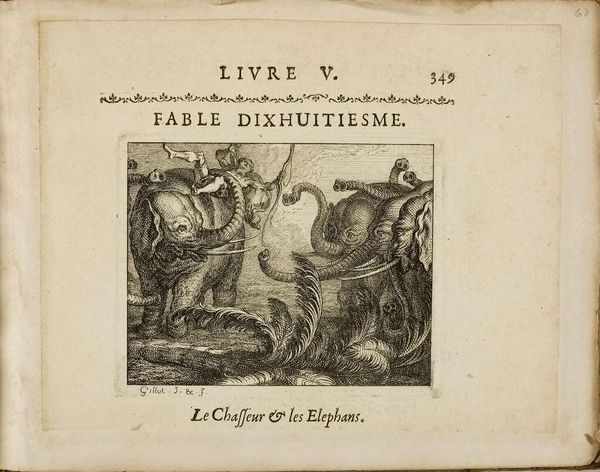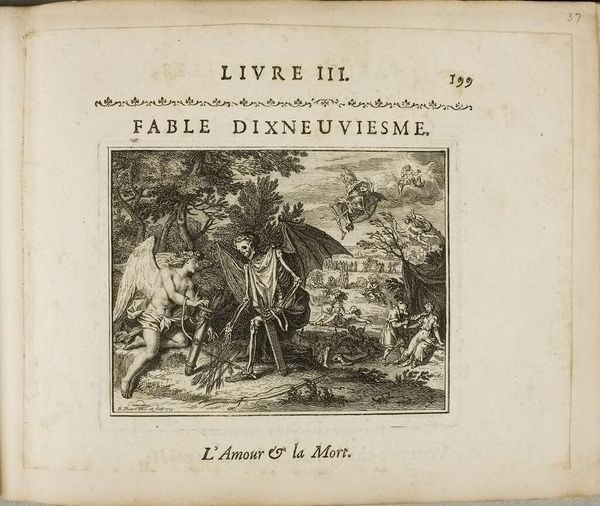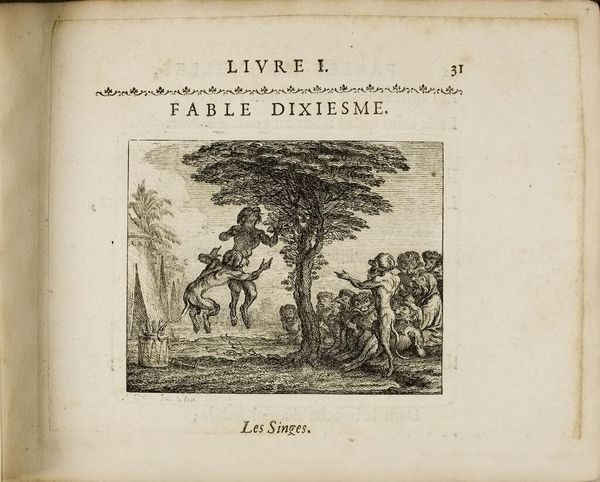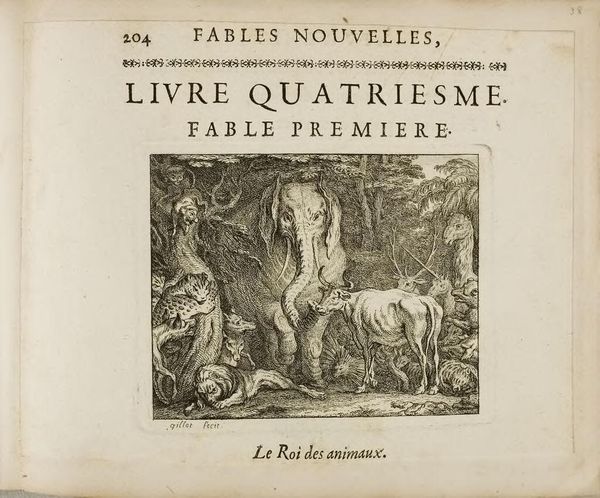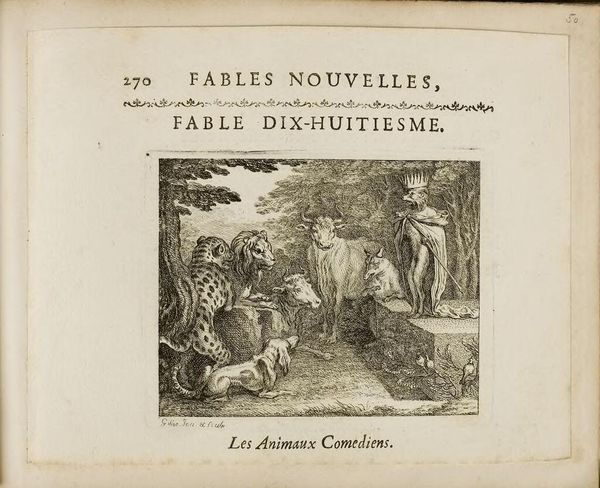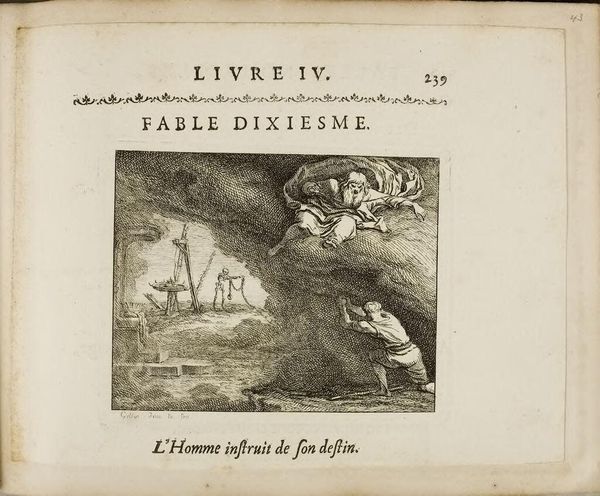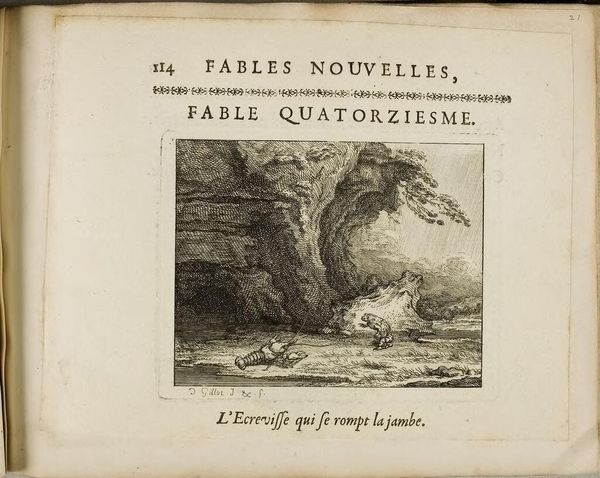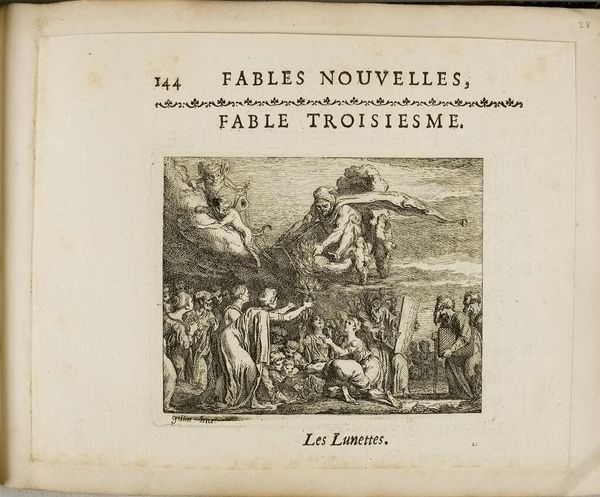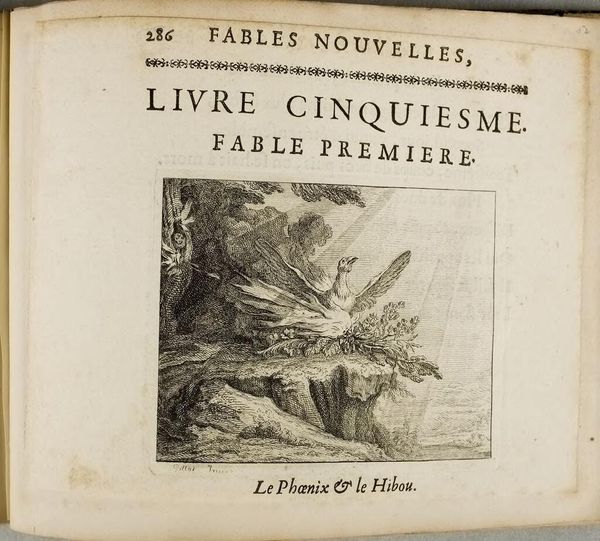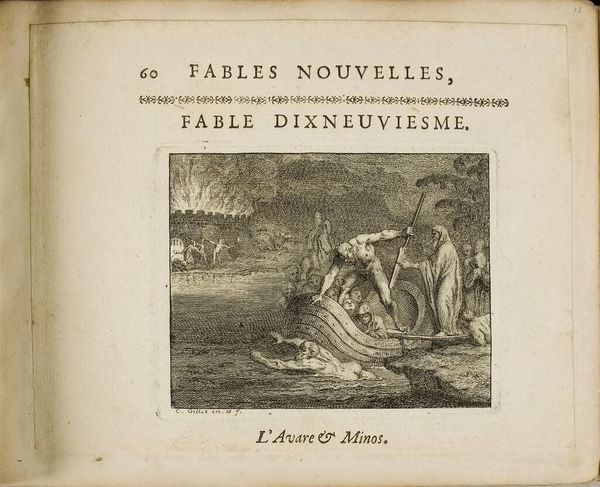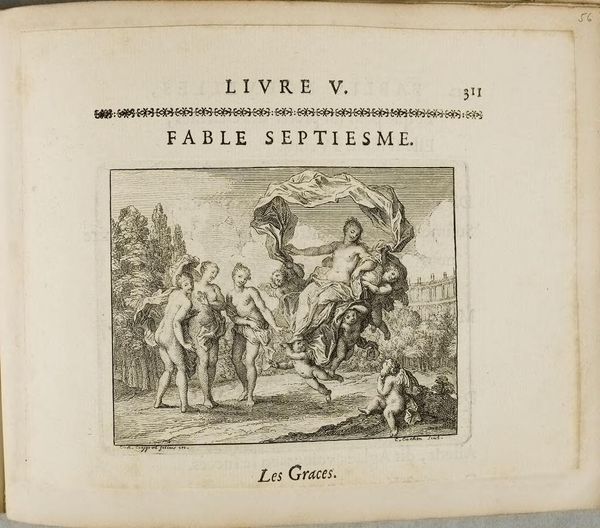
Dimensions: plate: 8 x 10.3 cm (3 1/8 x 4 1/16 in.)
Copyright: CC0 1.0
Curator: Let's discuss Claude Gillot's small etching, "The Whale and the American." Editor: At first glance, the scene is both whimsical and unsettling. The scale is off; there's an almost cartoonish quality, yet the subject matter hints at something darker. Curator: Gillot, who lived from 1673 to 1722, was known for his theatrical designs. This piece, part of a fable series, presents a decidedly biased view of early encounters between Europeans and indigenous populations in the Americas. Editor: Exactly! It’s a powerful statement, though insidious. The "American" figure is literally stranded, dependent on the behemoth whale – a symbol, perhaps, of nature or the unknown. Look at the power dynamic; the whale possesses an agency while the Indigenous person seems to be at its mercy. Curator: It underscores the colonial narrative of the time. The fable’s message likely served to justify European expansion, framing it as a civilizing mission. Editor: These historical representations are important to examine to uncover what they say about colonialism and its lasting effects. Curator: Indeed, Gillot's work serves as a stark reminder of the power of art to shape public opinion. Editor: This piece reveals the layered complexities and biases embedded within seemingly straightforward historical records.
Comments
No comments
Be the first to comment and join the conversation on the ultimate creative platform.

